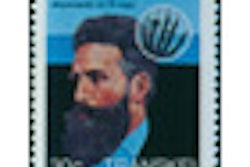
From June 20 to 25, the last candidates for certification in diagnostic radiology were tested live by American Board of Radiology (ABR) volunteer examiners at the Executive West Hotel in Louisville, KY. Future candidates will see a board exam that differs radically from the one to which radiology has become accustomed.
The change comes as the ABR is modifying its career requirements for diagnostic radiology fellows. For the current time, the ABR will continue its regular oral examinations for radiation candidates and physicists. But it has not determined the future locations for those examinations after the last general test in Louisville.
Exam evolution
Since the board was founded in 1934 (except for a few self-taught radiologist physicians of earlier years), young radiology residents were required to complete radiology training programs with oral examinations administered by prior board members and other volunteers.
Some decades ago, the ABR began to require written examinations about radiology during the middle of resident training. But the ABR also began to search for different tools for radiology candidates to demonstrate their knowledge of the field.
In its 2012 announcements, the ABR explained its new requirements:
The Core Exam, which replaces the current "written" (computerized) exam, will be taken 30 months after the beginning of radiology residency training. It will be an image-rich, computer-based exam administered in two ABR exam centers: the Chicago Exam Center near O'Hare Airport and the Tucson (Arizona) Exam Center at the board office.
The examination schedule will involve morning registration, session 1 in the afternoon of the same day, and session 2 in the morning of the next day. The exam will take 5.2 hours each day. The exam will test knowledge and comprehension of anatomy, pathophysiology, all aspects of diagnostic radiology, and physics concepts important for diagnostic radiology.
Eighteen categories are included on the examination. The categories are as follows: breast, cardiac, gastrointestinal, interventional, musculoskeletal, neuroradiology, nuclear, pediatric, reproductive/endocrinology, thoracic, genitourinary, vascular, computed tomography, magnetic resonance, radiography/fluoroscopy, ultrasound, physics, and safety.
If a candidate fails one to five categories, he/she will have conditioned the examination and must take a repeat examination in the categories that were failed. If a candidate fails more than five categories, the entire examination must be repeated. The exam will be offered twice yearly.
The Certifying Exam, which replaces the current oral exam, will be taken 15 months after completion of diagnostic radiology residency. The Core Exam must be passed before a candidate is eligible to take the Certifying Exam.
The Certifying Exam will be an image-rich, computer-based exam administered in two ABR exam centers, Chicago or Tucson. The first Certifying Exam will be offered in October 2015.
The shift in the ABR testing policy highlights the fact that a candidate can no longer pass oral examinations and be qualified for a career lifetime. For most of the early decades of the ABR, the only reason to take more than one oral exam was to have flunked all or a few portions of previous oral tests. Documents previously recorded who passed all parts of the first exam and who needed several other sequence exams before earning the ABR certification.
Also, in its previous decades, the ABR added special requirements for pediatric radiology, neuroradiology, nuclear medicine, and vascular and interventional radiology. Around 1970, the board agreed to separate tests for those seeking either diagnosis or therapy for career certification. Somewhat later, the ABR added physics examinations. The ABR also joined with other medical examiners in testing for certification of hospice and palliative medicine.
Origins of the board exam
When the ABR was organized in 1934 by five major radiology societies, it was the fifth medical specialty board accepted by the American Medical Association, defining an x-ray medical discipline. At that point, some 40 years since the 1895 discovery of x-rays, the formal residency concept for ambitious young doctors could not require all candidates to have formal radiology training.
In the early years, the ABR looked into possible definitions of how hospitals should qualify equipment and personnel for radiology service. One of the lingering challenges was that many other classes of doctors were performing and interpreting diagnostic x-ray exams without specific qualifications in surgery, orthopedics, internal medicine, pediatrics, or neuroradiology.
In the 1930s, a few U.S. radiologists tried to create and use artificial radioisotopes for medical purposes, in a process that did not involve the ABR. However, after World War II, the U.S. Atomic Energy Commission was enacted to provide these isotopes to doctors and other scientists.
To members of the ABR and to many other radiologists, the use of isotopes fell within the same broad application as x-rays, fluoroscopes, and radiation therapy devices. In 1950, the ABR announced it was willing to start adding questions on isotope usage for doctors taking ABR radiology examinations.
In the next decade, other doctors who wanted radioisotopes to be separate from radiology managed to persuade the American Medical Association to allow the creation of the American Board of Nuclear Medicine, with the ABR and the boards for pathologists and internal medicine specialists as its sponsors. Now, knowledge of nuclear medicine procedures is required for diagnostic radiology residents, so the new versions of the ABR exams will have questions on the use of medical isotopes.
With this radical ABR change, formal announcements have not been made regarding all of the other potential alterations to the testing process. But the ABR has continued to grow and will have committee members and leaders considering new elements of radiology qualifications.
Otha W. Linton, MSJ, retired in 1997 as the associate executive director of the ACR after 35 years. He also served as executive director of Radiology Centennial in 1995. Mr. Linton holds a bachelor's degree in journalism from the University of Missouri and a Master of Science in journalism from the University of Wisconsin. His work has been published widely in the U.S. and abroad, and he is a regular contributor to several journals including Academic Radiology, the American Journal of Roentgenology, Radiology, and the Journal of the American College of Radiology. He joined the ACR staff in 1961 and had a key role in its growth. Over the years, his responsibilities with the ACR included government affairs, public relations, marketing, publishing, industrial liaison, and international relations. Just before his ACR retirement, he became the executive director of the International Society of Radiology and served in that role until 2012. Also, since his retirement, he has written and published 15 histories of radiology societies and academic centers.



















